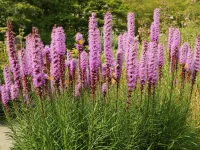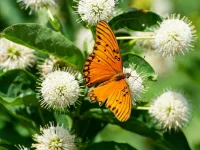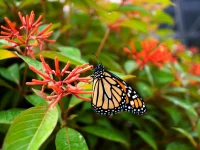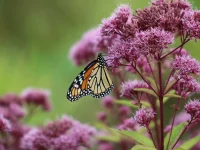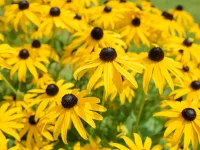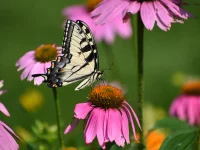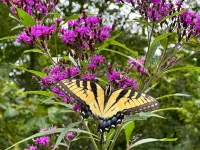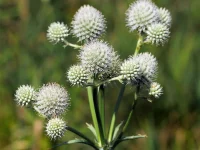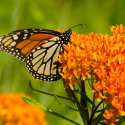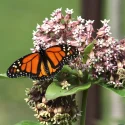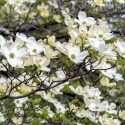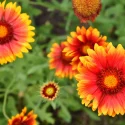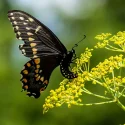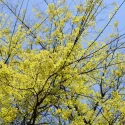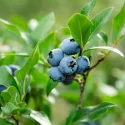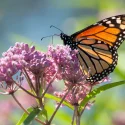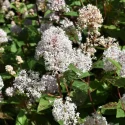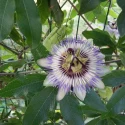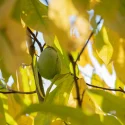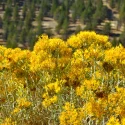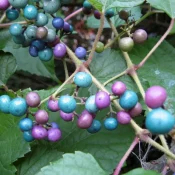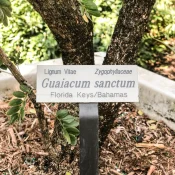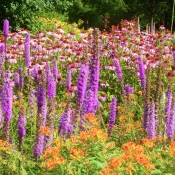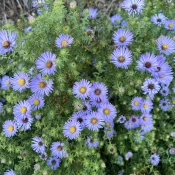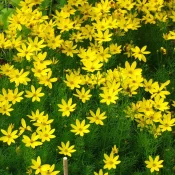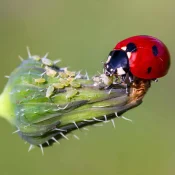What are the best native host plants for butterflies?
Looking to help attract butterflies to your garden? One of the most important things to do is grow host plants.
A host plant is a specific plant that a butterfly or moth eats, lives on, or lays its eggs on. Almost all host plants are native plants. Iconic butterflies like monarchs and swallowtails need native host plants to survive. Plant some native host plants today and make sure you have your phone charged for all the butterfly pictures. Scroll on to meet some favorite butterfly + host plant pairings.
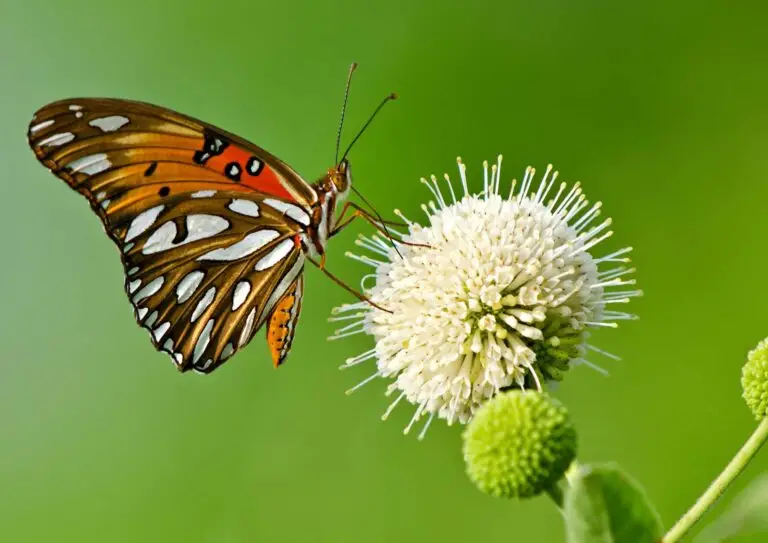
Looking to plant a butterfly garden? You have come to the right place! Before we dive into plant recommendations, let’s spend a moment on why native host plants are the best for butterflies.
So first off…
What is a host plant?
A host plant is a specific plant that a bug, butterfly, or caterpillar eats, lives on, or lays its eggs on. Some caterpillars only eat specific species of plants—these are called host plants.
If we want more butterflies, we need to plant the plants their caterpillars eat. This is why planting host plants is essential for our gardens and landscapes. Rebecca McMackin, the former director of horticulture at Brooklyn Bridge Park says it simply: “the best thing to do is to plant butterfly host plants.”
Why are host plants better for butterflies?
The introduction in The Midwestern Native Garden sums this question up nicely:
“‘Native plants are best because butterflies have adapted to using them over thousands of years.’ writes naturalist Thomas G. Barnes, a professor in the Department of Forestry at the University of Kentucky.”
Humbling, right? Thinking about host plants helping butterflies for thousands of years does put their power into perspective.
How can I find host plants for my area?
There are hundreds of native host plants. To explore a wide range of butterfly and moth host plants native to your area, a great, all-encompassing resource is the National Wildlife Federation’s Butterflies and Moths database. Type in your zipcode to find hundreds of host plants sorted by butterfly or moth species.
Easy-to-find host plants for butterflies
Sometimes, these big database websites can be overwhelming, or its difficult to find the native plants mentioned. To help make planting native host plants easier, this article shares the host plants for a selection of well-known butterflies and moths. Let’s dig into the host plants for the following creatures to help them survive while enjoying beautiful (and no fuss) gardens:
Native plants for Monarch butterflies
Monarch caterpillars only eat milkweed
There is only one native plant for monarch butterflies: milkweed. Monarch butterfly moms only lay eggs on milkweed. And there is only one plant that monarch caterpillars eat: milkweed.
Monarch butterfly populations have decreased 90% in the last 20 years in large part because milkweed has been disappearing. There are over 100 native milkweed species in the United States—plant some today.

Milkweed
We all need to plant milkweed, ASAP. It’s the host plant for monarch butterflies. Without Milkweed, there will be no monarchs.
Native plants for Gulf Fritillary butterflies
Host plants for Gulf Fritillary butterflies include the iconic Passionflower vine. Not only that, but Passionflowers are butterfly magnets in general, so you’ll be feeding lots of butterflies with this gorgeous plant.

Passionflower Vine
Several passionflower vines are native to United States. These gorgeous vines cover themselves in purple flowers that are meant for the portrait setting on your phone.
Native plants for Black Swallowtail butterflies
The host plants for Black Swallowtail butterflies are all in the parsley family. A bright and colorful native plant within this family that Black Swallowtails love is Golden Alexander:

Golden Alexander
Golden Alexanders are super easy to grow. They don’t require a lot of watering or special attention, which makes them ideal for busy gardeners. Their bright yellow flowers bring a pop of color to gardens.
Native plants for Spicebush Swallowtail butterflies
The name kinda gives it away…the host plant for the gorgeous Spicebush swallowtail is the Spicebush!
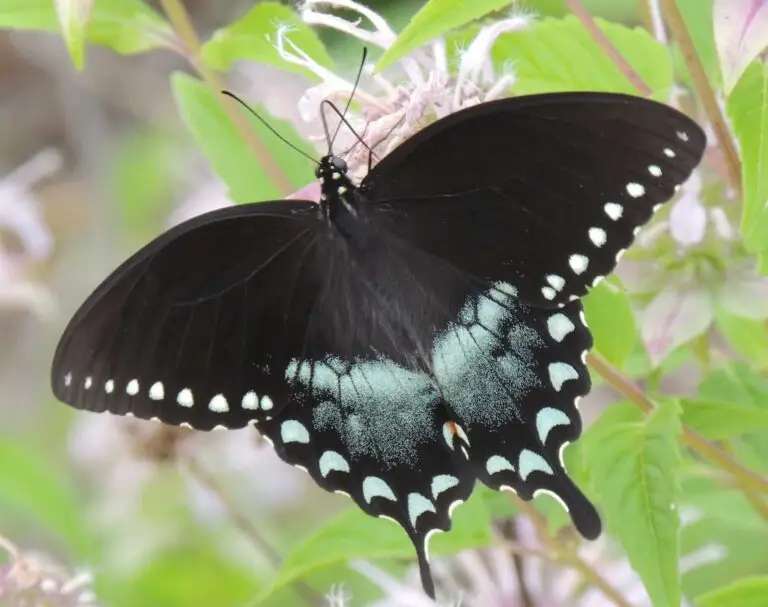
Spicebush
Spicebush also smells amazing. It’s a super easy to grow shrub that returns flowers alongside helping Spicebush Swallowtails thrive. (Also, you’ve got to see what Spicebush Swallowtail caterpillars look like—visit our Spicebush page to find out.)
Native plants for Zebra Swallowtail butterflies
The host plants for Zebra Swallowtail butterflies are Pawpaw trees. Not only that, but Pawpaw trees make the largest fruit native to North America (yes! you read that correctly!)

Pawpaw Tree
Pawpaw trees are one of North America’s undersung heroes—both for their fruit and their host plant abilities. They have incredible flowers and produce an edible fruit that’s a cross between a banana and a pineapple.
Native plants for Spring Azure butterflies
Host plants for stunning blue Spring Azure butterflies include the Eastern Flowering Dogwood AND the gorgeous New Jersey Tea bush. Plant both to get flowering trees and shrubs while helping Spring Azure butterflies.

Eastern Flowering Dogwood
The iconic Eastern Flowering Dogwood is a host plant for this gorgeous creature. Eastern Flowering Dogwoods are incredible statement trees (and also a favorite of birds.)
New Jersey Tea
The leaves of the New Jersey Tea shrub offer food for Spring Azure butterflies. Their flowers look like white lilac-like orbs.
Native plants for Pearl Crescents
Crescents are actually a different genus entirely than butterflies or moths (who knew?!) Many types of native asters are host plants for Pearl Crescents in particular.

Asters
Several species of aster are host plants for Pearl Crescents. Asters are also very important for butterflies and pollinators in general, because they provide food in the fall when many flowers have gone to seed.
Native plants for Io Moths
Io moths are absolutely iconic, showstopper animals. They are known for their bright colors (the males are recognizable by black dots on the wings.) Unlike Monarchs, Io moths have several host plants. Io moths use 47 native plants as host plants, including the beautiful False Blue Indigo and the gorgeous Redbud tree.

False Blue Indigo
Of the 47 plants that Io moths use as host plants, False Blue Indigo might be one of the most beautiful. False Blue Indigo also helps fix nitrogen in the soil, which helps the plants around it thrive.
Redbud
Do you need a statement tree? (Who doesn’t?) Redbuds are for you. Plant them and help Io moth caterpillars AND have a beautiful yard.
Native plants for Tawny Emperor + Hackberry + Mourning Cloak butterflies
There are a few native plants that are host plant superstars—Hackberry trees are in this elite group. It is the only host plant for Tawny Emperor and Hackberry butterflies, and the gorgeous Mourning Cloak and Question Mark butterflies also lay their eggs on Hackberries.
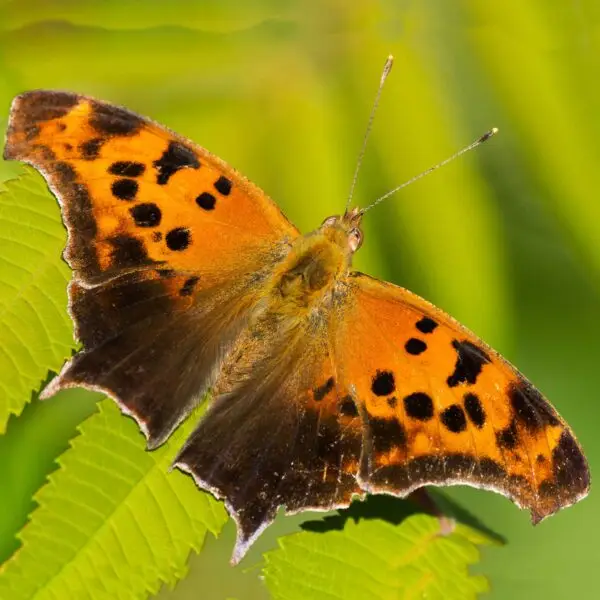
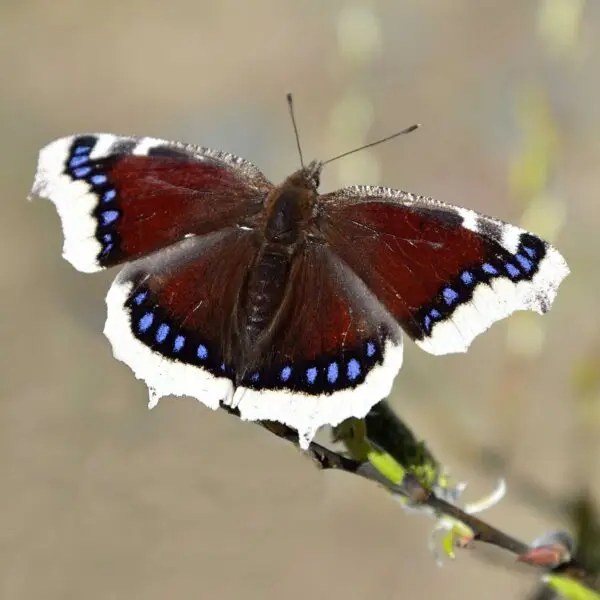
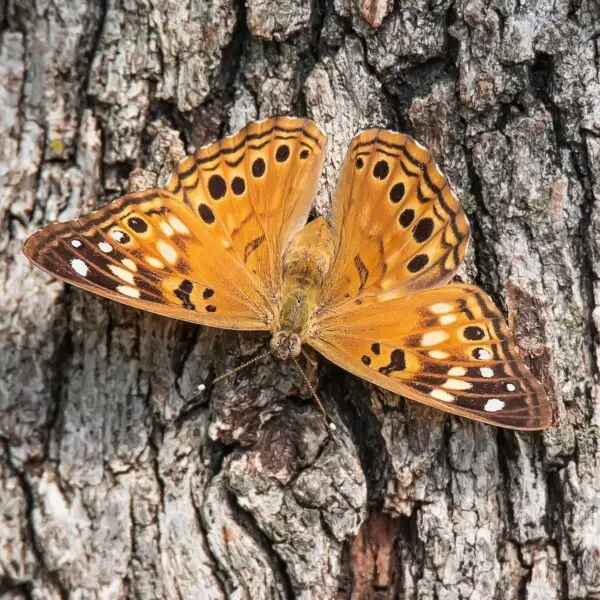
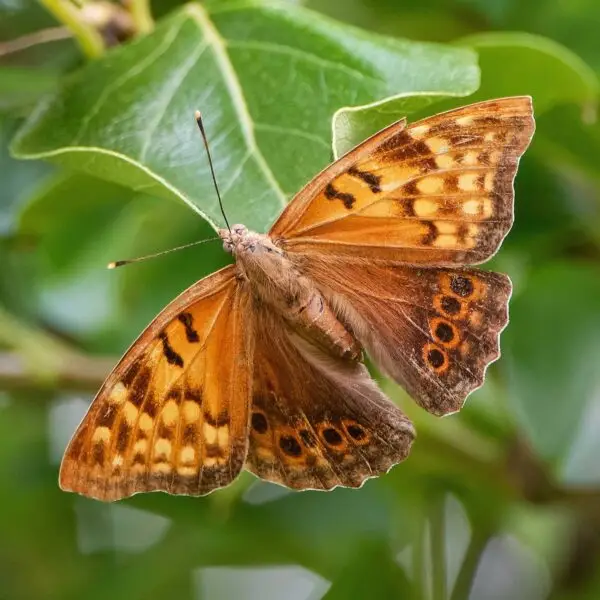
Hackberry Tree
This fast-growing native tree delivers four seasons of beauty while helping butterflies. Its fruit is also edible to humans and birds. It’s a wildlife magnet. Plant a Hackberry ASAP!
Native plants for *all* Butterflies
These native plants are adult butterfly favorites. They all have nectar-filled flowers that butterflies love to drink from. Their coloring and shape are all made to help butterflies eat and rest.
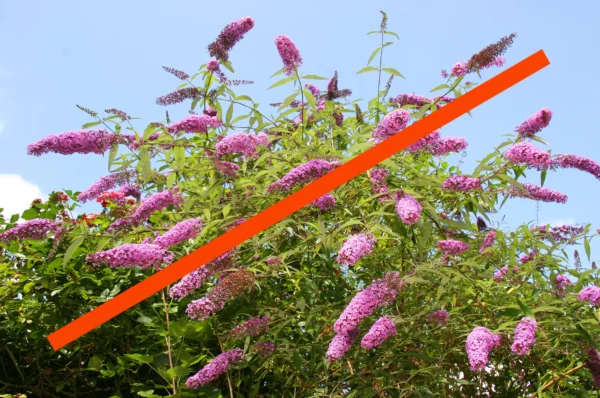
What about butterfly bushes?
“Butterfly bushes” are a true testament to the power of naming and marketing. Butterfly bushes are native to Asia and deemed invasive in many parts of North America. While the flowers do provide some nectar for butterflies when in bloom, butterfly bushes are not host plants for any North American butterflies.
Think of them like soda for butterflies—they are a sweet treat for adults but don’t offer the food or habitat of a host plant. Replace all butterfly bushes with native host plants.
Worried about caterpillars eating up your garden?
You may be thinking—all these caterpillars are going to ruin my garden, right? Well, let the fears subside. If you follow a few simple tips, your landscape will be filled with butterflies and not be overrun with insect pests:
- Be ok with some leaf-eating: some leaves will get eaten by caterpillars. That’s a good sign that your garden is helping butterflies thrive. Let them have some!
- No pesticides. Pesticides will not only chase off the butterflies, they will chase off the birds.
- Invite the birds. Did you know a single chickadee nest needs 7,000 bugs to feed its family? Once you give up pesticides and plant native, the birds keep the bug population from getting out of hand.
- Still skeptical? Here’s an overview of how nature balances itself out.
No matter where you live, native plants are the ideal food for butterflies. Planting native ensures that your yard and garden will look amazing and that the butterflies will have enough food and shelter to thrive for years. Each of the dozens of host plants mentioned here helps butterflies lay their eggs and feed their caterpillars, ensuring their populations survive for generations. Enjoy a beautiful landscape filled with plants and grateful butterflies. Happy planting!
Explore native plants by region
Sources
- Nelson, Gil. Best Native Plants for Southern Gardens: A Handbook for Gardeners, Homeowners, and Professionals. (1999).
- National Wildlife Federation, Zebra Swallowtail Butterfly, Io Moth
- Butterflies and Moths of North America, Io Moth
